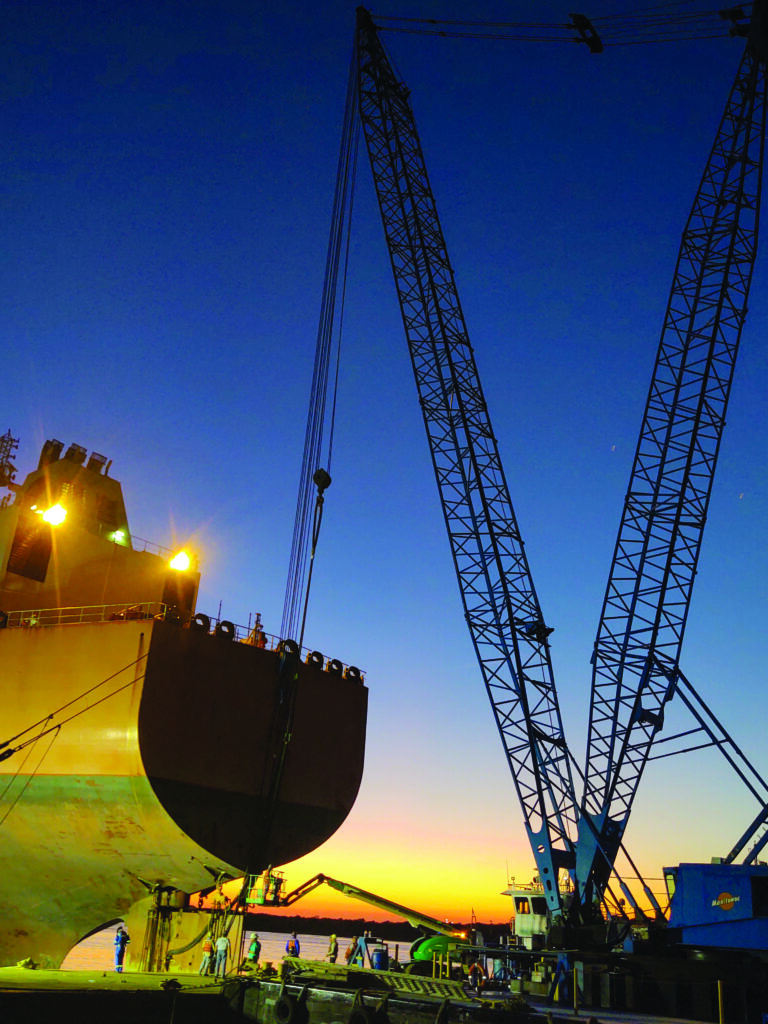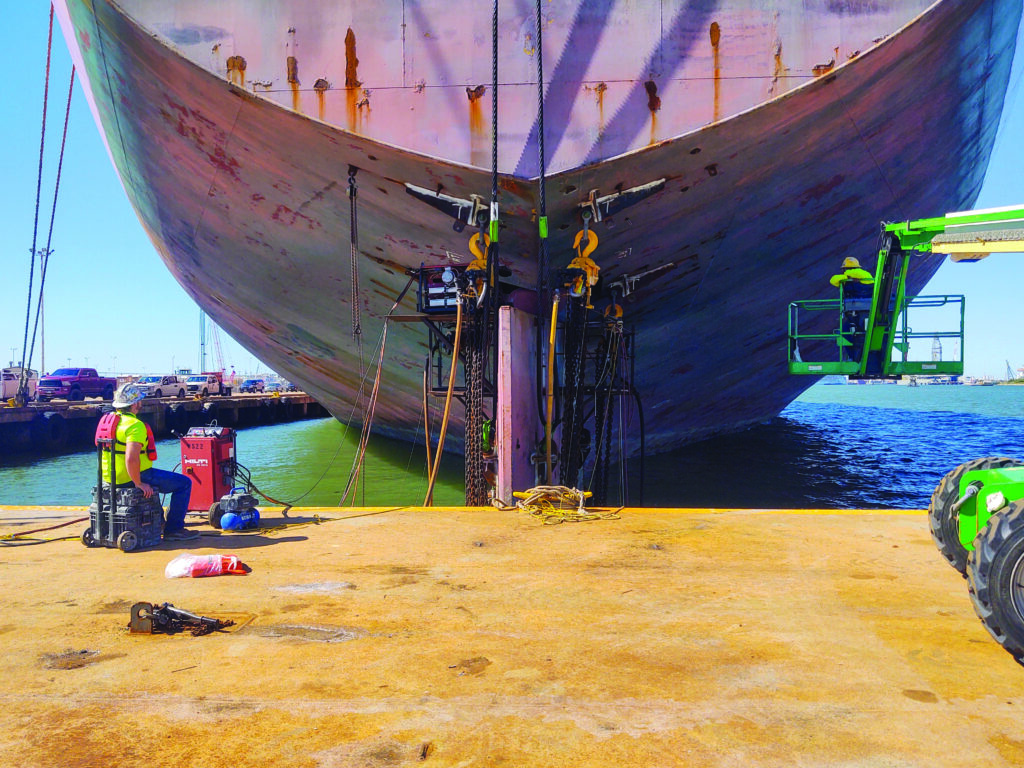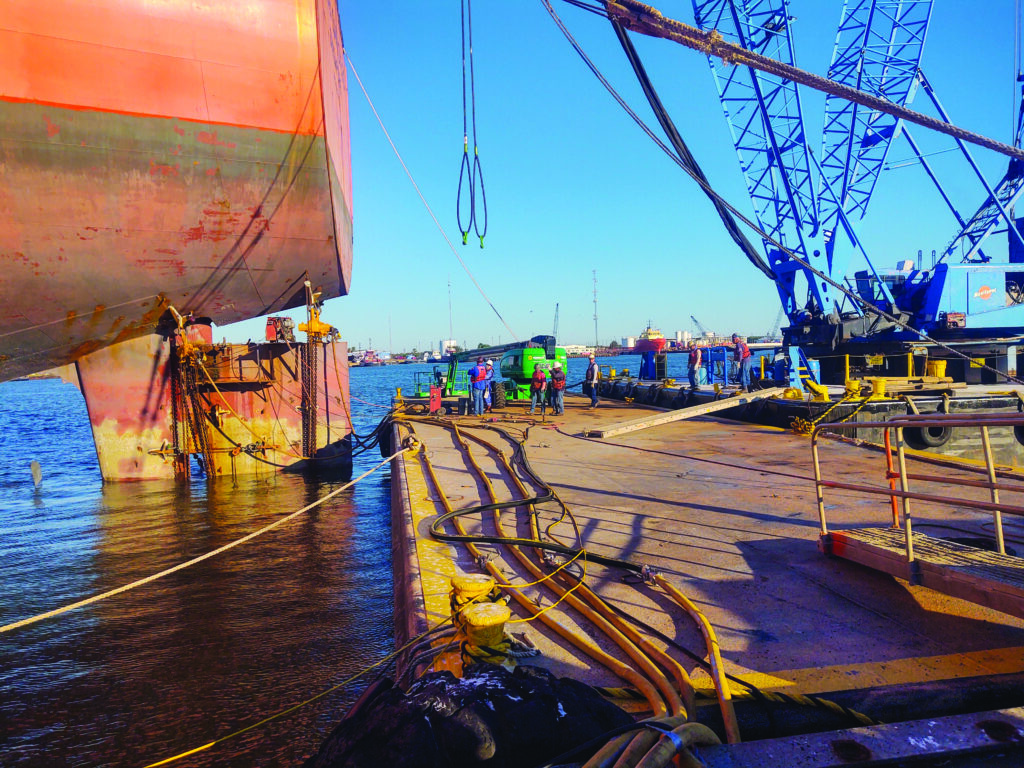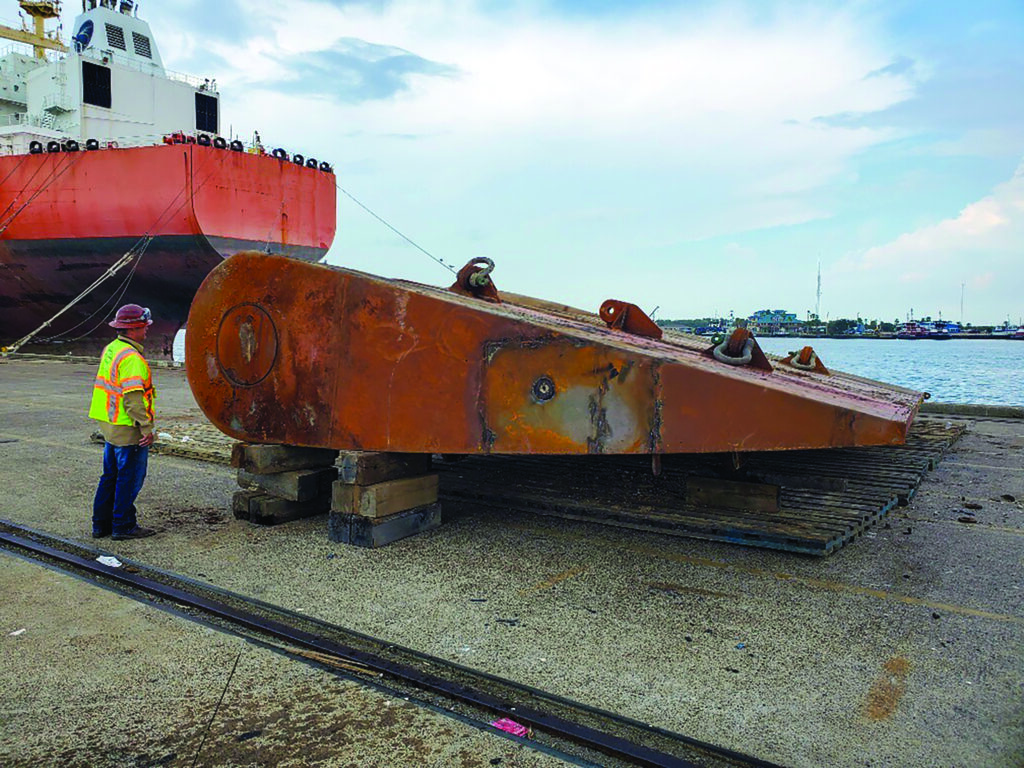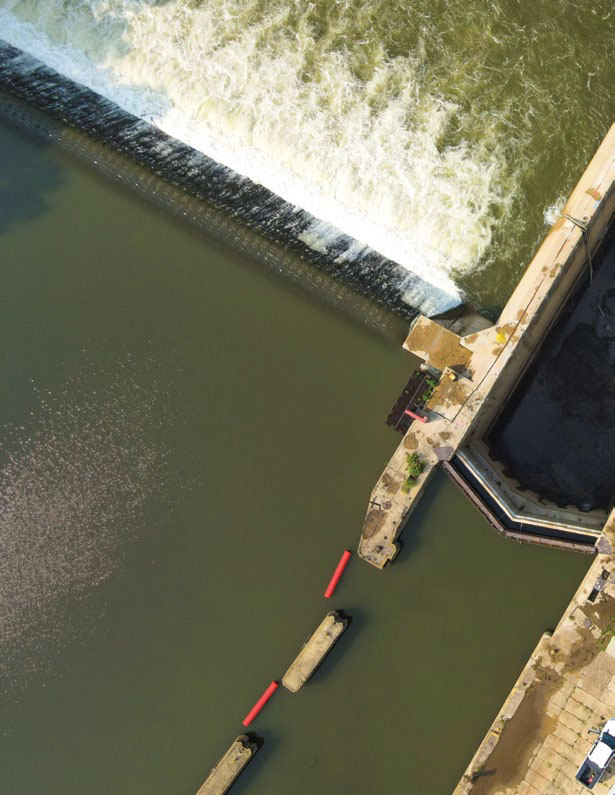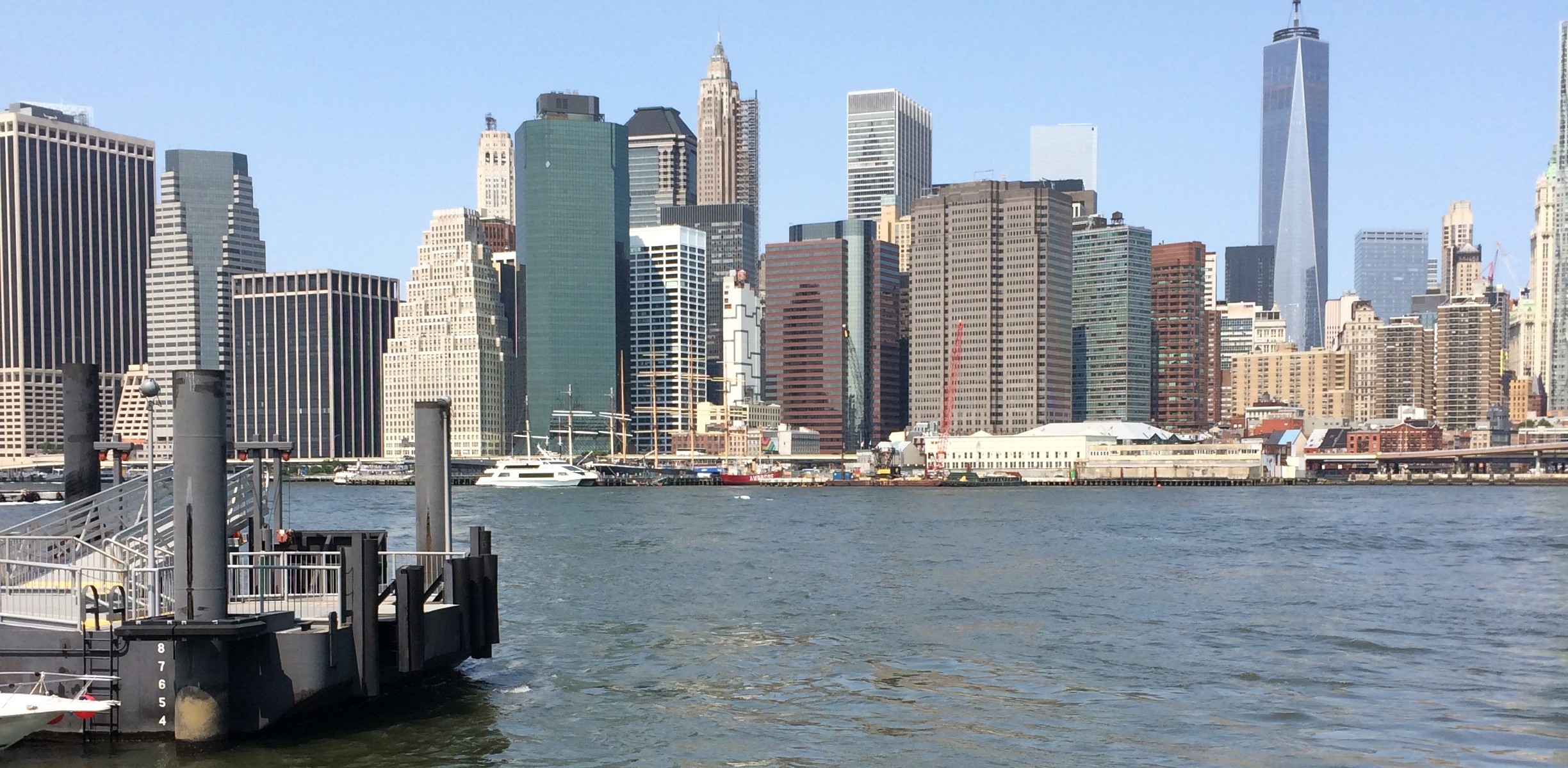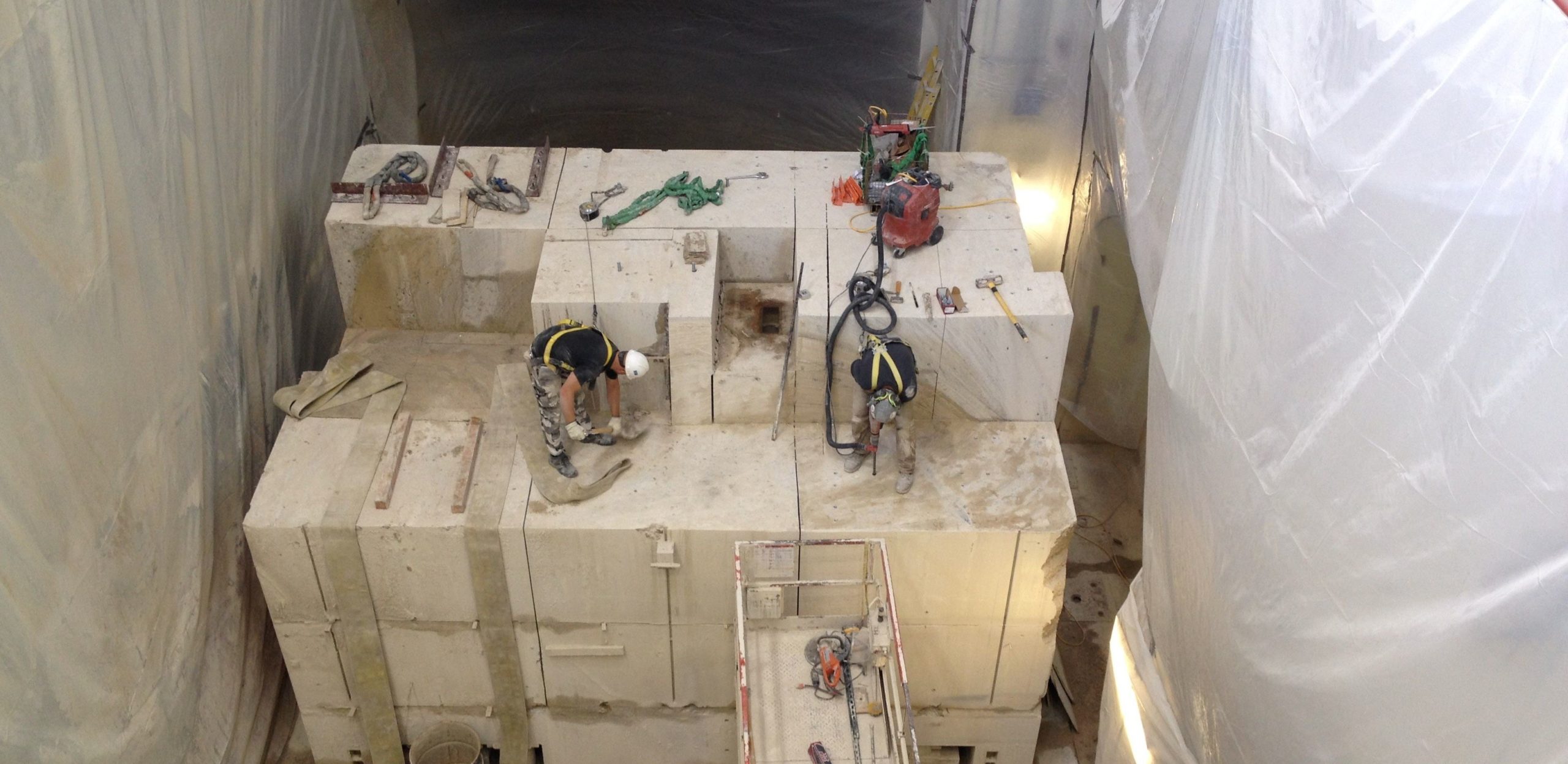
Iron Rudder Cut Free from Cargo Ship with Diamond Wire
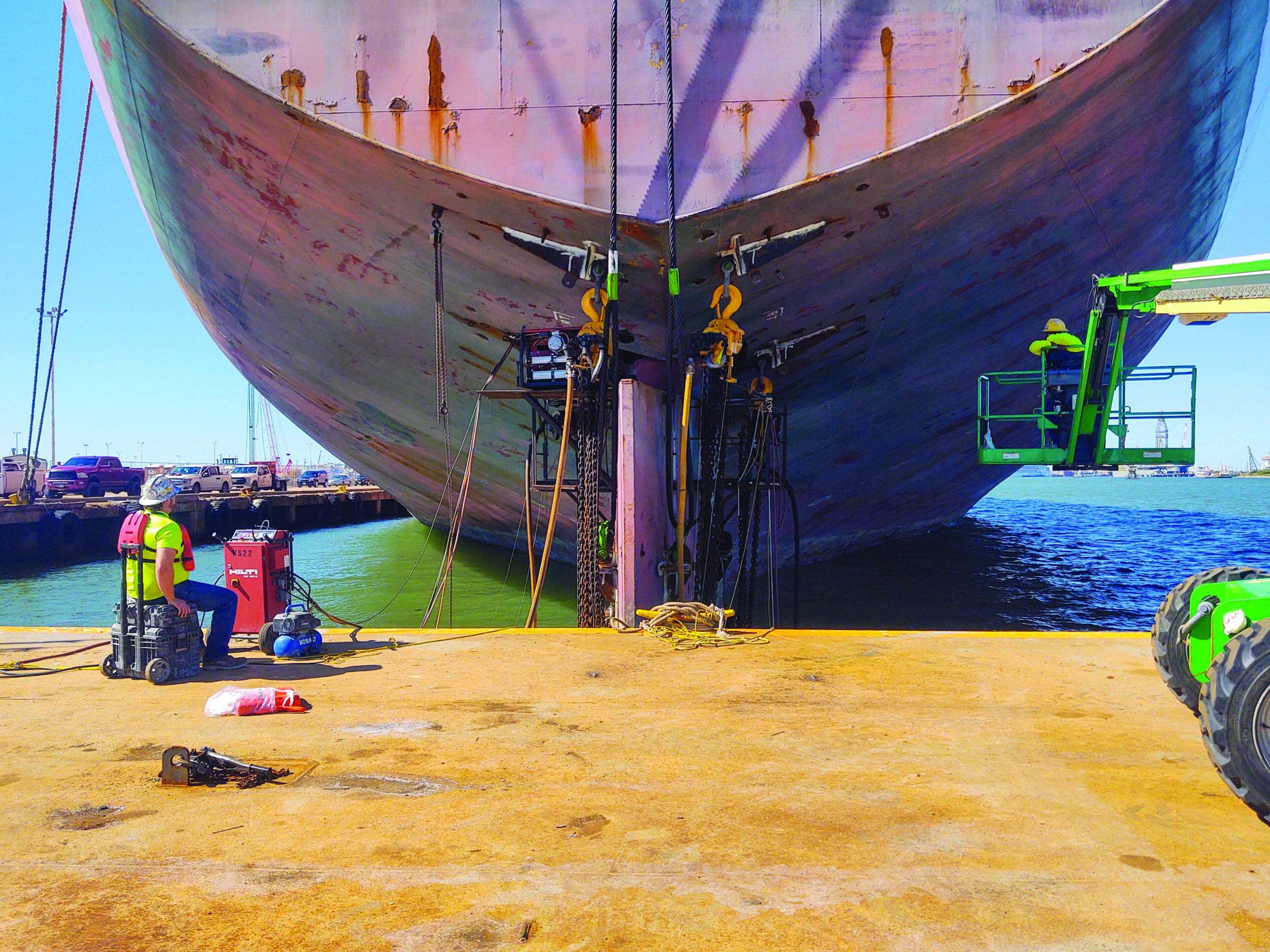
There are many analogies that compare something lost and listing to a “rudderless ship,” and for good reason. The rudder, typically an elongated rectangle preceding the propellers, is an essential element of the steering system of a ship or boat. Damage to the rudder can result in a ship moving entirely the wrong way or not at all. In Galveston, Texas, a cargo ship entering the Port of Galveston took the wrong course resulting in damage to its rudder. During the inspection of the rudder, it was discovered that the shaft securing the rudder was bent and damaged, making it impossible to remove for repairs. Thankfully, Holes Incorporated of Houston, Texas, is no stranger to underwater projects such as this.
Lee Aitken, Vice President of Sales, received a call to see if there was a way to cut and release the steel shaft that would completely remove the rudder from the ship. After failing to repair the rudder themselves, Goltens Houston, Bludworth Marine, and the cargo ship captain made the call hoping for good news. After a series of phone calls, conferring with Kellie Kimball, Holes’ Vice President and Director of Safety, an introduction and examination meeting, and a live demonstration on how the wire saw works, Holes was awarded this job. Job planning and methodology was decided upon, and Kimball and Aitken assured everyone that Holes was capable of completing the job safely and efficiently.
The ship was towed into Port and anchored to mitigate any movement. Due to the limited working space beneath the ship, and the limited time frame to complete the cutting, diamond wire sawing was chosen to be the most efficient avenue of removal. Holes and Goltens set up the Hilti WS-15 wire saw, and the steel shackles that would support the rudder when it was cut free. Holes operators were able to work off of a barge from behind the rudder and utilize a 40’ boom lift to access the rudder and begin the complex process of assembling their equipment and installing the wire saw.
Due to extreme tolerances, maintaining the layout accurately and cutting straight was tremendously important. Holes operators welded a 1” thick 4’ x 8’ steel plate platform on the rudder to support the wire saw equipment. Additionally, handrails were welded along with toe-boards for added protection while working over water. The wire saw power pack was operated by a Holes operator on the barge while a second operator ran the saw remotely and monitored the cutting from the boom lift. Both operators were kept out of the line of fire during sawing operations. It was especially crucial that everything was properly secured with the correct size bolts and welded into place to prevent operators or equipment from falling into the water below. During the morning safety meetings, it was decided that before entering the barge, all operators were required to wear a life jacket, have lifesaving buoy rings, and ropes had to be attached to every corner of the barge in case an operator accidentally fell into the water.
A Hilti WS15 with a set of dual Hilti return pulleys and a 50’ Diamond Products Electroplated Super Grade diamond wire were chosen to cut the rudder free. Other ships passing by were creating a wake causing the barge supporting the boom lift to roll and pitch with each passing wave. Because the operators were working beneath the ship, this caused the work to become very difficult and possibly dangerous. To mitigate these risks, they utilized a spotter to watch for passing ships and alert the boom lift operator to bring them to a safe location until the waves were gone.
Once the cutting was about 75% complete, the loosened rudder began to shift back and forth while sawing, causing the wire to pinch. To correct this, operators placed steel wedges in the cut then tightened the four 80-ton chain falls that were rigged to the rudder to take up the slack as the wire completed the cut. Operators cut the 30” steel shaft and completed the project in two days.
Holes, Inc. completed their portion of the project successfully, well within the allotted time frame and budget. In doing so, the other contractors onsite were pleased with the performance and safety measures. Kellie Kimball, Vice President of Holes, Inc., said about this project, “I was extremely pleased with the outcome of the job and the way our operators performed their tasks. Every step we made was meticulously planned before execution, from the specialty equipment to our safety procedures. Cutting and removing a rudder from a ship has never been done before and the Holes team was excited to be part of this once in a lifetime event.”
Kimball went on to say that she believes Holes was chosen for this project because they are the leading expert in their industry and a favorite to perform these complex jobs, especially over water. Holes continues to exceed expectations with their highly trained employees and rigorous safety standards.
Company Profile
The Holes Companies are service companies specializing in concrete slab sawing, core drilling, wall sawing, wire sawing, anchor bolt installation, concrete breaking, lifting, demolition, GPR scanning, load and haul and concrete pour back. The Holes Companies primarily work for commercial and industrial contractors, state highway departments and municipalities. Holes Incorporated, Holes Golden Triangle, LLC, Holes South Texas, LLC and Holes Technology, LP have built a solid track record through 50 years of experience, reliability and reputation. They have 50 employees and 28 operators and have been CSDA members since 1976.
RESOURCES
General Contractor: Goltens Houston
CSDA Contractor: Holes Incorporated
Contact for Story: Kellie Kimball
Email: kellie@holesinc.com
Tel: 281-723-5643
Website: www.holesinc.com
Methods Used: Wire Sawing
